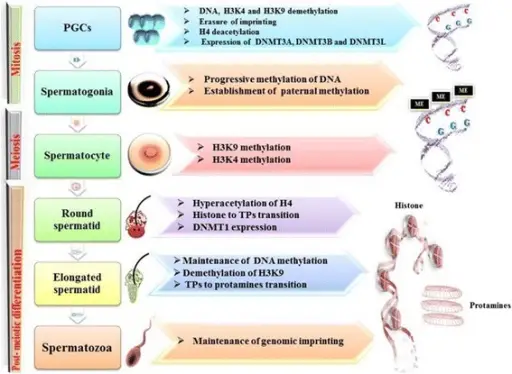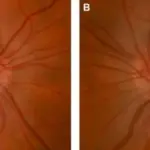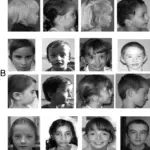Genomic imprinting is an epigenetic phenomenon that causes genes to be expressed in a parent-of-origin-specific manner. One gene copy of the gene is silenced by methylation, and the other copy of the gene is expressed.
What is Genomic Imprinting?

Epigenetic modifications during spermatogenesis. During the different steps of spermatogenesis, several epigenetic modifications involving DNA methylations and histone modifications occur. (1) PGCs undergo a process of demethylation involving DNA (with erasure of genomic imprinting) and histones (namely, K4 and K9 residues of H3). Also, a process of H4 deacetylation is present. DNMT3A, DNMT3B, and DNMT3L are expressed at this time. (2) In spermatogonia, a progressive DNA methylation occurs, with establishment of paternal methylation. (3) In spermatocytes, H3K9 and H3K4 methylation is observed. (4) In round spermatids, H4 becomes hyperacetylated, DNMT1 is expressed, and the transition from histones to TPs occurs. (5) Elongated spermatids show a maintenance of DNA methylation, together with H3K9 demethylation. The transition from TPs to protamines occurs at this step. (6) In spermatozoa, the genomic imprinting is maintained. Epigenetics and male reproduction: the consequences of paternal lifestyle on fertility, embryo development, and children lifetime health. Stuppia L, Franzago M, Ballerini P, Gatta V, Antonucci I - Clinical epigenetics (2015). Not Altered. CC.


